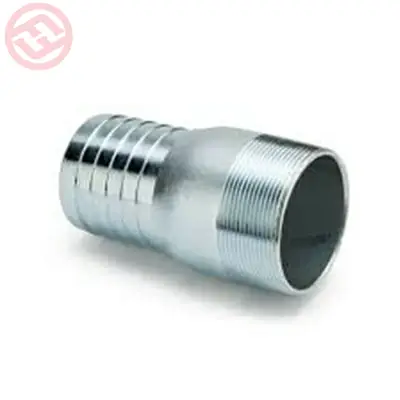Steel pipe joints, couplings, and sockets are pivotal elements extensively employed in the industrial sector, serving a critical function in linking diverse mechanical apparatuses and piping systems. This paper will delve into these essential components, exploring their definitions, distinctive features, application domains, and prospective advancements. Fluid-Tech, as steel pipe nipple manufacturer, provides quality steel pipe nipples, steel sockets and couplings.

Introduce About Steel Pipe Nipples
Primarily, steel pipe nipple serve as components for linking steel pipes, facilitating the union of two pipes to establish a comprehensive piping network. The primary function of these fittings is to furnish robust connection strength and effective sealing to uphold the smooth operation of the piping system. Steel pipe fittings encompass various types, including welded, threaded, and socket fittings, among others. Each type caters to specific piping systems, offering distinct features and advantages tailored to diverse requirements.
Threaded joints connect steel pipes via threaded connections, featuring female and male threaded joints. Socket joints achieve connection by inserting one steel pipe into another, with common examples like socket elbows and socket tees. Flange joints link two steel pipes through flange connections, including flat welding flanges, butt welding flanges, and blind flanges.
Steel Coupling Feature To Connect Two Shafts
Furthermore, steel coupling serves as a component utilized for connecting two shafts, facilitating the transmission and rotation of the shaft. A notable characteristic of steel coupling lies in its capacity for high torque transmission and commendable dynamic performance. It proficiently transfers torque, diminishes transmission errors, and enhances transmission efficiency. Additionally, steel couplings come in various types, including flexible, gear, and universal couplings, among others. Each type of steel coupling is tailored to specific transmission systems, boasting distinct applications and characteristics.
Steel Sockets Could Realize Electrical Equipment Connection
Again, steel socket is a component used to connect electrical equipment to the power system. The main feature of steel socket is that it has high current carrying capacity and good safety performance. It proficiently conducts electrical energy, ensuring the smooth operation of electrical equipment. Steel sockets come in numerous variations, including standard sockets, waterproof sockets, and multifunctional sockets. Each type caters to distinct electrical equipment requirements, offering varied functions and features. Floor sockets are installed within the ground, commonly found in outdoor and public spaces.
These three key components are widely used in the industrial field. Steel pipe joints find extensive utilization within pipeline systems across industries including petroleum, chemical, and construction, guaranteeing the secure functioning of pipelines. Steel couplings are prevalent in transmission systems within sectors such as mechanical manufacturing and automotive manufacturing, aiming to enhance transmission efficiency and reliability. Steel sockets are widely used in power systems in sectors like households, commercial establishments, and industries, ensuring the normal power supply to electrical equipment.
